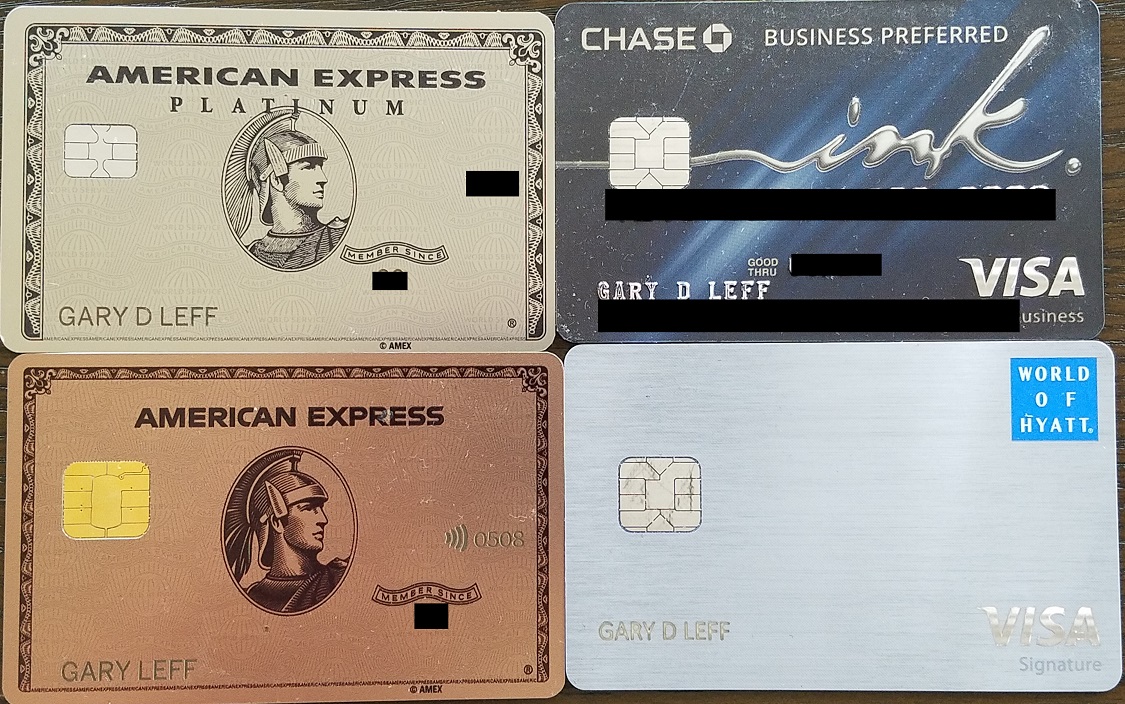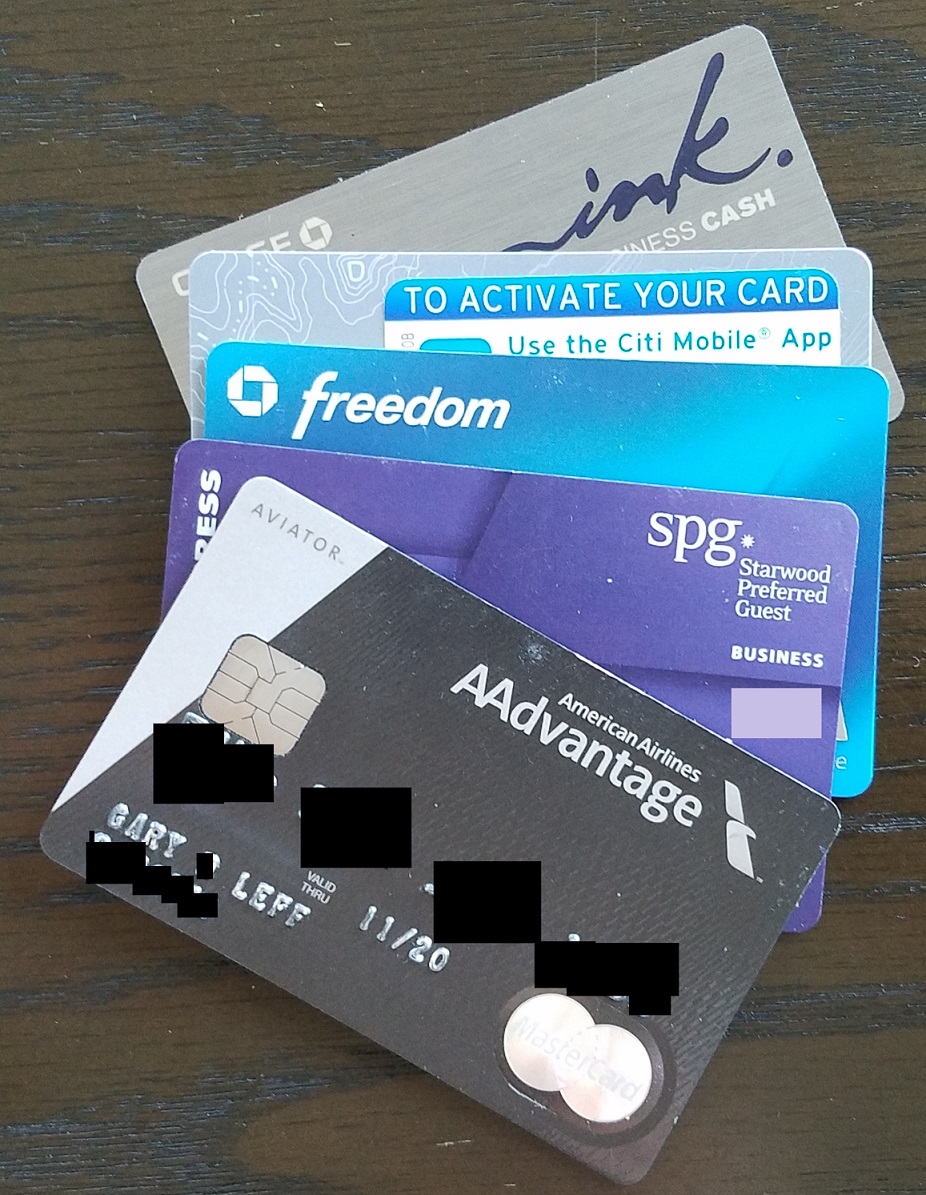AOC and Anna Paulina Luna have teamed up to take credit away from poor people. They’ve introduced legislation that would cap credit card interest rates at 10%, below the level they’ve ever been. That might allow card financing to remain in place for customers who are near-certain credit risk. It means extending credit to borrowers less able and certain to pay back would not be viable.
And since the best rewards cards roughly speaking rebate the full value of interchange captured by the bank issuer, with those banks hoping to pick up cardmember revolve, eliminating the financial viability of revolve also effectively eliminates valuable rewards cards. This further has the effect of undermining the financial viability of the current airline model.
For instance, Southwest Airlines launched Hawaii service in large measure to make their co-brand credit cards attractive to customers who wanted to use their points to Hawaii.

Southwest Airlines Honolulu
American Airlines learned with its JetBlue partnership that competing in New York, adding seats to the market and driving down fares, made their loyalty program a viable option for consumers in that most lucrative spending market.

American Airlines New York JFK
Co-brand cards make airfare cheaper, and undermining their viability would have the opposite effect.
Congresswoman Anna Paulina Luna (R-FL) is working with Congresswoman Alexandria Ocasio-Cortez (D-NY) to cap credit card interest rates at 10%.
This is a good thing. pic.twitter.com/VyzsMUmesv
— Eric Daugherty (@EricLDaugh) March 8, 2025
On the Senate side, this is backed by the least economically literate members on each side of the aisle Bernie Sanders (I-VT, who edges out Elizabeth Warren) and Josh Hawley (R-MO).
Price caps create shortages, but that’s the point. They want to take away options, because they think poor people are stupid and lack agency. They are getting ‘trapped’. Luna explains, “For too long, credit card companies have abused working class Americans with absurd interest rates, trapping them in an almost insurmountable amount of debt.” But it’s not credit cards that keep people poor, it’s poverty. What’s the alternative to credit card interest?
- People still need credit, for instance they still need to get their car fixed to go to work
- When they choose credit card financing, it’s because it appears to be their best option
- Take that away, and they’re stuck with their next best option
- Which is generally even higher cost.

Buy now pay later services from Uplift and Paypal charge up to 36% interest which is generally higher than what you’ll get from credit cards. With fixed fees amortized over short periods, payday loans can have APRs up to 400%.
Now, there’s a level where credit card interest wouldn’t matter. Cap credit card interest rates at 40%, and the rule would have no effect (at current bank issuer financing costs). But a 10% cap is clearly below the market-clearing price. Credit card interest rates have never been that low. Remember, it’s pre-approved unsecured financing that can be drawn at-will.

Remember that credit cards are voluntary. If you think their interest rates are too high to make sense, don’t use them for financing. Eliminating them as an option doesn’t eliminate the need for financing. Money lenders have been a convenient political (and other) target for centuries for those who can’t think more deeply about problems, or cynically for politicians who believe their constituencies cannot.
Credit cards are the piping that underlies financial transactions in the United States, and allows consumers to seamless make transactions wherever they go around the world. Swipe a card or tap a phone, and merchants have confidence they’ll get paid by someone they’ve never met and may never see again. Interfering with that risks profound effects across the entire economy, beyond the personal hardships restricting access to credit to more marginal borrowers would mean.
And it would have effects beyond undermining credit card rewards and airline stability, which would further entail a return to Congress for more taxpayer money, which Delta CEO Ed Bastian has said they’d get.


Gary, this is a bad take. Unfortunately, you’re thinking zero-sum, when you should be considering win-win scenarios. It is remarkable that left and right economic populists can agree on this–but it’s not unreasonable: these usurious interest rates are harmful to most folks. And if these major companies (credit cards, banks, airlines, hotels, etc.) can only run these programs by harming certain vulnerable groups, than that’s an underlying problem with their business model. Loyalty programs and points programs do not have to come at the expense of others. These businesses can make slightly less profit (yet still be quite profitable) without having to harm anyone. Yes, some greedy shareholders and oligarchs may be disappointed–good.
Capping credit card interest at 10% is insane. There is no unsecured debt you can get elsewhere remotely near that amount. Currently, I’m lending to good borrowers on secured bridge debt for 12-14% with under 60% LTV. Unsecured is probably closer to 20%, I don’t lend to unsecured.
Some bare minimum empathy for people who get bamboozled and bankrupt by these credit card companies is how one should view this.
For every points hack you extoll there’s someone losing their car and house by these predatory banks.
Right on schedule, 1990 again with the dumbest take imaginable
Gary is 100% correct on this issue
There can be a negotiated cap. PayPal is charging 36 percent interest rate on their virtual credit card , that’s insane it’s robbery !
That’s pretty disgusting, 10 percent cap or not they will still make gross profits !!
Hello ????
Any comments on the 0% introductory rates that last about a year or 0% balance transfers (actually 3% fee)?
@Hal — 10% is not ‘insane’—usurious interest is actually unreasonable. Lenders should scrutinize their borrowers more robustly if you are actually concerned. Rather, I think you’re taking the bait on the industry’s fear tactics of ‘but, but, we’ll have to end the points and miles programs!’ Nope. These corporations can manage themselves better, still profit immensely, all without screwing and scamming consumers. Period.
@Coolio — Call me whatever names you’d like (‘dumb’ this time, which is quite tame) all without addressing any substance—I’ll take that as a win for me. But, then, why not stick to a single name for you? Because switching between Mike P or Andy S to make it seem like there are more of you than there actually are is not fooling me.
See this story could have been covered without the political baiting and fear mongering. “Some fear it could… Other think this could really help…”
But instead we get this conservative think piece. Posted on a blog I typically respect and enjoy. I’m thinking of “View from the Wing” differently after reading this.
Sightly off-center, but Gary why would you buttress your argument by attaching pejoratives? I mean, how do Bernie Sanders or Elizabeth Warren become “least economically literate” in your calculus? Because they often stand up to Big Business? Because they point out the enormous wealth inequalities that now ravage this country? If that’s economically illiterate, I guess I’m one of them…
Gary, thank you for a great post and analysis. It’s helpful in exposing the stupidest, least educated members of our Congress (AOC, Luna) and Senate (Sanders), as well as local participants like 1990. Stupid enough to show complete lack of understanding of the subject, yet bold enough to claim a ‘win’.
I agree that we should exercise caution in restricting the maximum cost of credit, but the counterargument (which I find persuasive) is that the US credit card market is now effectively an oligopoly due to a series of big bank mergers and acquisitions. That means that the average credit card interest rate is currently above the competitively-efficient rate due to tacit collusion.
Fed rate cuts are no longer getting fully “passed through” to card holders like they once did when the industry was more competitive. Price controls are bad economic policy when the market is already efficient, but they can actually move a sector closer to the competitive market optimum when the sector has a collusive oligopoly or monopoly (so long as the price cap level is reasonable). Congress could pass a law capping interest rates at 10% and mandating that bank access to Federal Reserve loans and repo facilities is contingent on extending credit to Americans. The banks might loudly complain, but they would have little choice but to keep extending credit. The rewards cards would still exist (unlike in Europe), because rewards cards are primarily held by superprime borrowers. For these customers the banks (particularly Amex) make most of their profit from the interchange fee and annual fees, not from interest accrual.
If, however, Congress passed both the AOC-Luna interest cap AND the Durbin-Marshall-Welch proposed bill forcing card issuers to offer at least two payment network options to merchants (to drive down the interchange rate), then the rewards cards would indeed disappear and the premium leisure air and hotel travel industry would get decimated. Rewards card enthusiasts should focus their opposition on interchange fee caps that would impact superprime borrowers, not on the maximum interest rate charged to the subprime ones (who receive few rewards anyway).
Just pay off your credit cards every month like I always do and assume the vast majority (if not all) of people that post on here do. Problem solved!
As Gary noted, this will dramatically reduce credit options for many since banks will tighten their underwriting and also cut credit limits (and don’t expect any business to “voluntarily” make less profit). That means people that need credit will be reduced to taking out high interest pay day loans or go to a loan shark.
You can’t fix stupid and if people can’t manage their money or understand the cost of credit I have zero sympathy for them.
I would support a law that whenever somebody applies for a credit card, the information from the credit pull becomes available to the other credit card companies, and they can give unsolicited offers to the applicant for a card with better interest rates.
Yes it would divulge consumer information, and yes it would result in more spam mail, but it would incentivize credit card companies to make interest rates more competitive.
Credit cards used to be more voluntary but a lot of businesses no longer want to take cash. 10% as a fixed rate is so low that a lot of companies would end up only extending credit to the most credit worthy. I could see a rate of 6% or 8% above the year over year CPI percentage inflation, calculated monthly. It would still result in a massive amount of credit being withdrawn. For families with credit debt and student loans, a lower rate on credit debt along with a lower credit limit could give them more money to make sure that they can pay the monthly amount for the student loan. Probably student loans should be looked at so that loaning a high amount of money for a degree that is unlikely to boost wages by much will be cut. Degrees that have solid earning potential would still be able to get large education loans.
Simple pay off your credit cards every month and don’t live beyond your means. We have people making modest money with $20K in cc debt and a $700 car payment. Personally, I buy a good solid used car. Putting out $40K for a new car is not a good money decision.
But of course we have to have rules for the stupid in our society.
@ Gary — I find it highly inappropriate to call these Congresspeople illiterate and uneductaed (please reserve that for the magats). They know what they are doing and they know it is bs. I certainly hope they fail.
@Gene – I would agree with you in case of Sen. Hawley…he’s educated (I believe he has a J.D.) and smart; in this case, he’s just playing to the masses. Despicable populism, just like Bernie.
But AOC? The overrated bartender?? I see nothing in her congressional history to indicate the woman knows first thing about economics, capitalist system, markets, etc. And I don’t see her trying to learn or get educated either. All she can do is social media.
Can’t agree with your slam on the sen/rep’s finance creds. They are much smarter than you think. I taught math and can tell you that people don’t understand what credit card hell they can get into with current rates. And it’s true. Lower income people are especially susceptible to this trap.
Gary, your view is erroneous this time. The sheer greed of these card companies is beyond the pale. Perhaps 10% is too low and should be reserved only for the best risk. When you inquire about lowering a rate from 30%, they will almost always reject you. Is 18-20% not enough for these greedy creeps ??? As for the airline miles, almost always the savings in interest will be a better deal than mostly watered-down worthless miles. The banks should now pay for the years of ripping off their customers with usury.
Well it is bipartisan.
My .02 here…
As was pointed out by Gary and a few others, using a credit card is a choice and if you get in over your head because of stupid choices, that’s no ones fault but yours.
If the C.C. companies fell like they can’t make enough with the 10% ceiling, they will just not give credit to those they deem too risky. And those that NEED credit, they are going to have to move on to worse choices.
Anyone who remembers how hard it was to get a mortgage for years after 2008 will realize that capping interest rates will result in credit being unavailable to people without a perfect FICO.
It’s OK to advocate caps as long as you anticipate and accept this consequence.
Oh no airlines will gut their mileage programs but have someone else to blame this time!
“Southwest Airlines launched Hawaii service in large measure to make their co-brand credit cards attractive to customers who wanted to use their points to Hawaii.”
No airline is launching a flight for point redemptions. That’s like a car company building a car for the instagram likes.
I don’t understand what’s wrong with 10% rates. There is even an upside for the banks. In the 80s and 90s, credit was easy to come by, and interest hovered around 12-14%. The banks still made a profit and offered airline mileage programs. If banks had to lower interest rates to 10%, they would attract more people who wanted that debt and who would be willing to pay for it. Never in the past did we have 30% interest rates, and today few people I know have credit card debt. The real worry is Durbin’s credit card bill. Banks make a lot of money from swipe fees, and those are felt by big-box retailers and not cardholders. They also pay for our mileage cards. I would focus far more on nixing Durban’s bill than on AOC’s.
10% is too low, but some of the rates being charged are predatory and no better than loan sharking.
I personally benefit substantially from the status quo. Our net rebate in total is somewhere in the v high single digits based on our spend through my thoughtful habit of maximizing rebates (points or cash back) as one of my only real hobbies other than reading View. I have never paid a penny in credit card interest. I’ve also never been forced to apply for a credit card. We live in uncertain times. Hopefully someone will look out for the 1%.
How about not buying things you cannot afford as a way to stay out of credit card debt? Maybe that 40″ 1080p store brand is just fine, you don’t need the 80″ Sony 4K tv. Reminds me of the people who finance an expensive car for 96 months and don’t even realize the car drops half its value the moment they drive off the lot.
@Alex — This guy gets it.
@CSue — Fine, Congress should actually do its job and negotiate the particulars. Bring in experts. Have meaningful debate. Maybe there’s a good reason for 10% specifically, as a ceiling. Maybe it’s 11%, or 12%, etc. But the current market rate of 25% on average is indeed excessive. Without a ceiling, things do become usurious, fast.
@Steve — Yup, rare bipartisanship–when there is something like this that brings both sides together, we should take it seriously. The status quo is not working for most folks.
@patrick @nsx at FlyerTalk — You each have the same concern–capping interest may cause lenders to ‘want’ to restrict credit. Good news–we already have tools to deal with this–the Federal Reserve has authority to ensure liquidity in the financial markets and to encourage lending in such situations–it won’t be perfect, but they’re pretty good at what they do.
@AC and @George N Romey — ‘Just pay off your cards’ is a simple solution to a complex problem. Most of us here are responsible with our credit, and we do pay off our balances each and every month–I sure do. You need excellent credit to even qualify for many of the premium cards that some of us have and enjoy. However, even if we are responsible, this isn’t about just us, it’s about creating fair rules for everyone.
@Joseph — Bah! Won’t anyone think of the super-rich! Those poor billionaires! /s
Just like @Coolio before, @Gennady repeats the same faux pas, calling those you disagree with stupid or ‘uneducated,’ while ignoring any substance in support or against.
Wow! Anyone have kids in their 20s here? Yes, I put all my kids on some of my credit cards early, but when they went to apply for credit cards on their own after their first jobs, wow! I literally had to send three months of bank statements to some of them. Chase told me “what did you expect—she has no personal credit.” Now, they each have 4-6 credit cards, but the effect of this law would be to tighten credit rules. Wouldn’t have affected me at all, but my kids are very interested in the hobby and even under current rules, I needed to get involved. So, it is not just people who revolve who would be affected.
Hal said this:
“Capping credit card interest at 10% is insane. There is no unsecured debt you can get elsewhere remotely near that amount.”
In fact, this week and last week I have been offered extensive unsecured debt at 8.99% or less. For example, Amex keeps offering to provide me and some relatives unsecured personal loans for 5-6 figure USD amounts at sub-9% APR.
I’m with Gary on this one. The unintended consequences of price controls are always worse than whatever perceived problem that is trying to be addressed.
@Mantis Not necessarily. A positive historical example of price controls is the regulation of natural monopolies like electric utilities. Targeted price controls for monopolistic or oligopolistic sectors have a different effect than broad-based price controls like the one implemented in the 1970s by Richard Nixon. The effect of price controls varies by sector industrial structure.
This will never pass. All noise. AOC? Come on now. THe cards and debt are already out there. They cant just cap that at 10%.
The Merry pair of reps may have had a chance if they had randomly picked a reasonable number, but 10%? Banks write off close to 5% of credit card balances right now, leaving roughly 5% for their gross profit. Currently AAA corporate bonds are running around 5.25%. So the banks can either lend unsecured to people who can self select when they want the money (which, of course, will be once they can’t get money out of mortgages or car loans or other secured loans, which are cheaper, or when they are already behind on those) for a 5% profit, or they can lend their money, with 0 administrative costs and nearly 0 risk, to well vetted corporate borrowers for 5.25% profits. What do you geniuses (1990, How’s that for name calling) think they will do?
Having been in banking, they would have to remove roughly 15% of the risk profiles to reduce that write off percentage by 1%. So 15% of those people you want to help will have no option at all, for this to even start to make the slightest bit of sense for the bank. To realistically make any sort of economic sense, you would have to cut the default rate to no more than 2%. Each reduction in default rate requires more and more risk profiles to be cut, so likely at least 75% of risk profiles would have to be removed for a bank to make even 2.75% above the near risk free rate.
Even those numbers would require them to remove the the interest free grace period. To keep the interest free grace period would require all of the numbers to roughly double as about half of balances that banks are investing in cards revolves interest free.
I mean, if they just wanted to ban credit cards they could have just said so. “Make Mafia Loan Sharks Great Again!”
Such price controls could lead to unintended consequences, including reduced access to credit for higher-risk borrowers, as lenders might find it unprofitable to extend credit under these constraints. This reduction in credit availability could push consumers toward more costly alternatives, such as payday loans, which often carry significantly higher interest rates. While the intention is to protect consumers, the result could be a decrease in consumer welfare due to limited credit options and potential increases in borrowing costs elsewhere. Obviously, the elimination of valuable credit card rewards programs would further diminish consumer benefits. Market-determined interest rates, free from government-imposed caps, are by the most effective means of allocating credit efficiently and benefiting consumers overall.
Apologies, I’ll confess to having missed the payday loan comment in Gary’s article. Great minds…
@Mike Hunt — First of all, you already know that many of us who use credit cards pay them off regularly and do not pay any interest whatsoever. Your concerns over ‘price controls,’ like others before you, is not applicable to lending, because unlike a good or service, the quality doesn’t diminish, and the Fed controls the supply (of money), so it can stipulate funds to encourage banks to lend, even if you think that banks won’t ‘want’ to with such a ‘ceiling’, so these concerns are indeed overblown. As I said before, enough with the pro-business anti-consumer fear tactics.
@Adam L — That’s absurd. This doesn’t literally or figuratively end credit cards—it would prevent usury. Alas, none of this is likely to pass anyway. Oh well. Let’s keep bankrupting the poors!
“the car drops half its value the moment they drive off the lot.”
Hyperbole at it’s best. New cars do drop substantially when driven off of the lot but not in the 50% range. If that was so, one year old used cars in excellent shape would be substantially less than they are. I have bought enough used vehicles from both dealers and private parties to personally know this. It could be somewhat truer using the MSRP or the sometimes higher dealer sticker price as the value but most vehicles driven off of the lot have at least some discounts applied. The true value is the lowest a person could get the new vehicle for cash. Getting it for less and having a payment every month using a relatively high interest rate does not indicate a lower value.
Play stupid games, win stupid prizes.
Unless you are talking about credit cards for the severely mentally ill with the financial skills of a dyslexic monkey, 40% or higher is virtually unheard of. The majority of my credit cards carry an APR of around 20% with a few at around 26%. But for those with an IQ > 4, the APR is irrelevant.
If you pay your credit card bill in full and on time every time your effective APR is 0%. Those that are stuck paying interest do so only because of their own bad luck and / or stupidity. Need sympathy @1990? You will find it in Webster’s right between shiat and syphilis.
A blanket 10% APR is, in a word, retarded. 10% is what you might expect with mortgage or a car loan. They can afford low rates because they have strong guarantees and collateral. So, @1990, precisely what collateral does, say, Chase have when they issue you a credit card? Oh, and the Big Mac you just pooped out an hour ago is not collateral.
@1990 also added credit card rewards as a contributing factor for high APRs. Any idiot should know that swipe fees are determined almost 100% of the time by the merchant’s merchant services provider. Every one provides a standard swipe fee regardless of which card you accept. Most decent merchant service providers, such as Chase, charge about 2.6%. Even with a 2% rebate offered by many credit cards, the credit card issuer still earns a slim profit. Where they really earn money is from idiots who pay late and those who carry a balance.
Credit card issuers wrote off about $47 billion last year. About 3.10% of credit card holders are in default. Expecting a global APR of 10% is a sure sign of severe mental illness.
@1900 – While it’s true that many credit card users pay their balances in full and avoid interest, that does not negate the effects of price controls on lending as a whole. The key issue with government-imposed caps is not whether some consumers will be fine, but how such restrictions distort market incentives and reduce efficiency.
Banks don’t lend out of charity. They do so because they expect a return that justifies the risk. If a 10% cap makes it unprofitable to lend to higher-risk borrowers, those individuals will find credit harder to access, not easier. Artificially lowering prices below market equilibrium leads to shortages… whether of gasoline in the 1970s or credit today.
As for the Federal Reserve, while it controls the supply of money, it cannot dictate how banks allocate capital without unintended consequences. As others have correctly pointed out, if banks are forced to lend at rates that don’t match risk, they will simply tighten credit standards, leading to fewer people (especially those with lower credit scores) getting approved at all. At the risk of repeating myself, this is why many well-respected economists have opposed interventionist policies: the well-intentioned goal of ‘helping’ consumers often backfires, leaving many worse off.
Rather than dismissing such concerns as ‘pro-business, anti-consumer fear tactics,’ it’s worth stopping a minute to think about whether unduly restricting voluntary transactions between lenders and borrowers actually serves the interests of consumers in the long run. I would submit that it very rarely (if ever) does.
@Mike Hunt You have not addressed my points about market power. When an industry is a monopoly or oligopoly reasonable price controls INCREASE market efficiency, not diminish it, by moving the price closer to the competitive optimum. Nearly all electric utility companies are subject to price controls for this reason. This is not the same as the broad-based price controls of the 1970s. This is Industrial Organization (IO) Economics 101. To address deadweight loss from market power you can either use antitrust policy to breakup a concentrated industry or use targeted price controls (“rate regulation”). Banks would not limit lending in the case of a reasonable interest rate cap if they must do so to receive Federal Reserve loans. One of the main economist critiques of the post-financial crisis Federal Reserve stimulus is that the stimulus did not filter through to average households because large banks could take advantage of quantitative easing and a low Fed Funds rate without a mandate to extend more borrowing to households.
@Steven – Your argument hinges on the idea that the banking sector functions as a monopoly or oligopoly, justifying rate regulation to move pricing closer to a theoretical competitive equilibrium. However, I would argue that the financial sector, particularly consumer lending, is vastly different from natural monopolies like electric utilities.
Utilities are price-regulated because they require massive fixed infrastructure, creating insurmountable barriers to entry and making competition impractical. Consumer credit, however, is a competitive market with numerous players (including traditional banks, credit unions, fintech lenders, and peer-to-peer platforms) all competing to offer loans and credit at market rates. Unlike a natural monopoly, this market sees constant innovation and disruption, undermining rather than bolstering the case for government price controls.
Regarding the argument that banks must lend to receive Federal Reserve loans, this ignores the reality of risk management. If the government forces lending at artificially low rates, banks will either tighten standards, limiting credit to those with the best scores, or find alternative, less regulated avenues to profit (as we’ve seen with higher fees and reduced rewards in similar scenarios).
As for post-financial crisis stimulus, the failure to filter through to households had more to do with regulatory uncertainty and capital requirements, not a lack of willingness to lend. Rather than imposing price controls that could have unintended consequences, a better solution would be policies that encourage competition such as reducing regulatory barriers for new entrants, promoting transparency, and ensuring banks have incentives to lend rather than hoard reserves.
What’s wrong with earning for spending later? So many commenters here. Make it look like going into debt is somehow both good (no, paying $150 with interest form something that costs $100 if you waited a bit is not good) and somehow a human right.
That distortion in the market that these artificially high rates, both loan and merchant fees (and the resulting frequent flyer redemptions ), introduce is extremely worrisome to any free marketeer or liberal in the old sense of the word.
If I want a banana, I should have the freedom.to buy one without being forced to pay more for a side of miles, which I can’t turn down.
Hopefully more and more merchants will start adding card processing fees to people paying by card so at least the poor aren’t forced to subsidize the wealthy paying with cards, and everyone is free to choose whether to save money or get miles.
@Mike Hunt — I’ll assume you only ‘inadvertently’ shaved 90 years off my moniker–it’s cute. I am grateful my finger doesn’t slip onto ‘C’ for your last name…accidentally, of course.
On your response, of course for-profits business are not charities, by definition. Likewise, I already recognized that banks make immense profits already on credit cards and other financial products, and would continue to do so, even with a lower top interest rate, as proposed here.
On monetary policy, once again, money is not like oil, a commodity, so a hypothetical comparison to the 1970s oil crisis is not an appropriate analogy. Regardless, you do realize that in that incident OPEC was *withholding* supply and *increasing* prices, not increasing supply and encouraging lending (as the Fed would do), if we went with your analogy. Again, you original concern was that lenders would choose not to lend if they couldn’t charge usurious rates–I still disagree, and think that is an overblown concern, given the authority of the Fed to ensure liquidity.
@J.C. — Ah, welcome sir. Others above used ‘dumb’ and ‘uneducated’ yet you landed on ‘mental illness.’ Call your opponents whatever silly names you wish. We can take it.
On substance, I think you’re mistaking most credit cards with other financial products, like mortgages, which are usually backed by collateral, such as the underlying real estate. Sure, some credit card products are ‘secured’–the consumer often funds a bank account with a specific balance to get approved for modest credit. I get it, nothing is perfect–sometimes it goes well, other times, bankruptcies. It is certainly not ‘fun’ to be a debtor or a creditor, but that judicial ‘process’ is better than vigilante ‘justice’ or debtors’ prisons.
So, let’s remember, there’s a long history of banking, both for better and much, much worse. We should seek to continue to improve the industry, which is the intent of this bipartisan proposed legislation (to prevent usurious interest)–as I’ve already admitted, it is likely not to pass, unless personally blessed by our new king. So, you and your cohort will probably ‘win’ by default. Yet another victory for the oligarchs! Yay! Cheers!
The great 1990 shows his idiot head once again.
@mike s — I enjoy the insults. Feed me.
@1990 – It was a typo. While it’s true that money isn’t a physical commodity like oil, the point is that price controls – regardless of the market – often lead to unintended consequences. Interest rate caps can and do restrict credit access, especially for higher-risk borrowers. Regarding the Federal Reserve’s role, while it can influence liquidity, it doesn’t directly control banks’ lending decisions. So I’ll say it for at least the third time now: if interest rate caps make certain loans unprofitable, banks are likely to reduce lending to higher-risk individuals, limiting their access to credit. Market interventions mostly lead to inefficiencies. An illustrative example of government-imposed interest rate caps restricting consumer access to credit occurred in the late 19th-century United States. During this period, many states enforced low usury ceilings, making it unprofitable for legitimate financial institutions to offer small loans to consumers. This environment led to the proliferation of unregulated lenders, often referred to as “salary lenders,” who operated outside the law to meet the demand for small-dollar credit. These lenders charged exorbitant interest rates and employed aggressive collection practices, exploiting consumers who had limited access to traditional credit sources due to restrictive usury laws. The unintended consequence of these stringent rate caps was a thriving underground lending market that lacked consumer protections, ultimately harming the very individuals the laws aimed to protect. Recognizing this issue, reforms were later implemented to balance the need for consumer protection with the necessity of providing access to legitimate credit options. Those who are ignorant of history are doomed to repeat its mistakes.